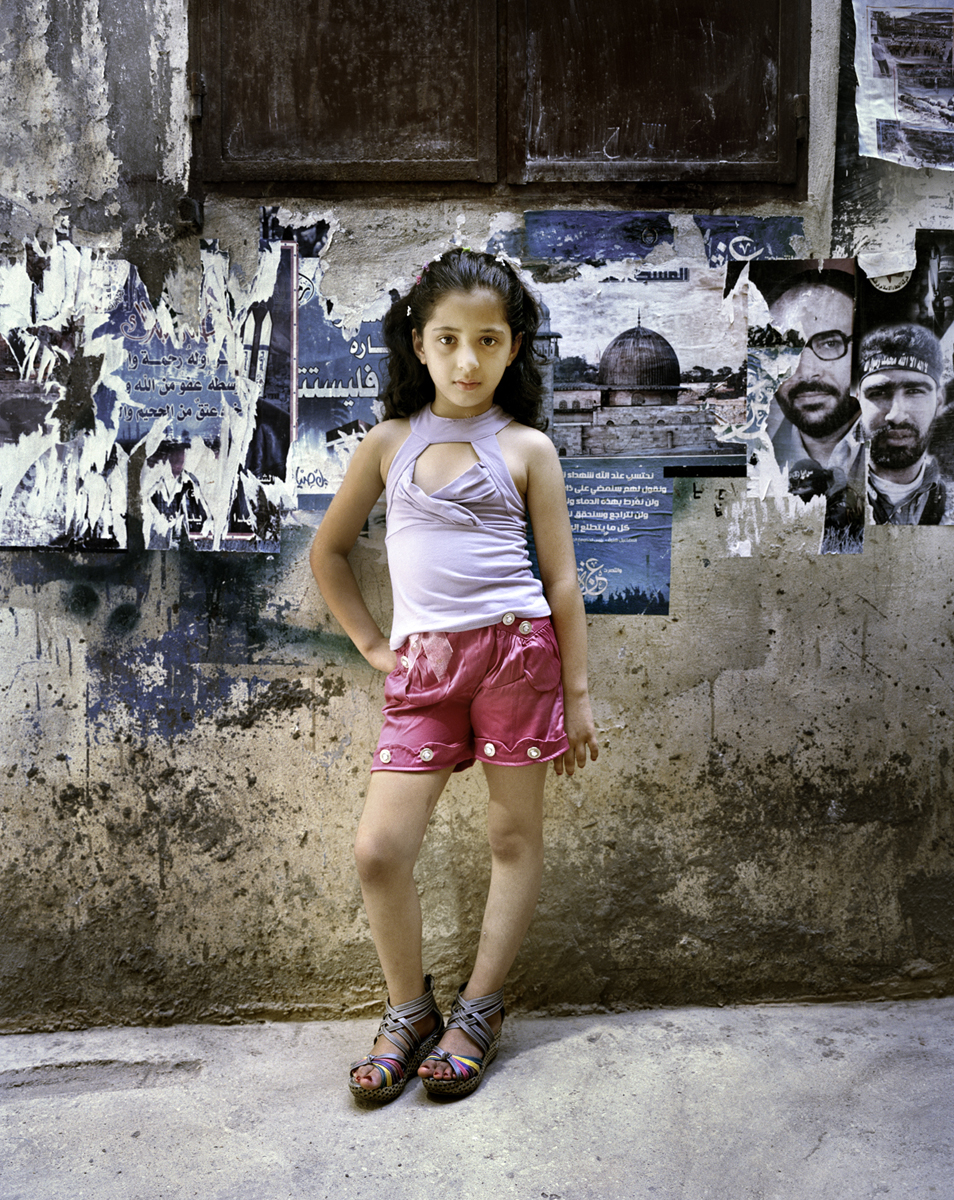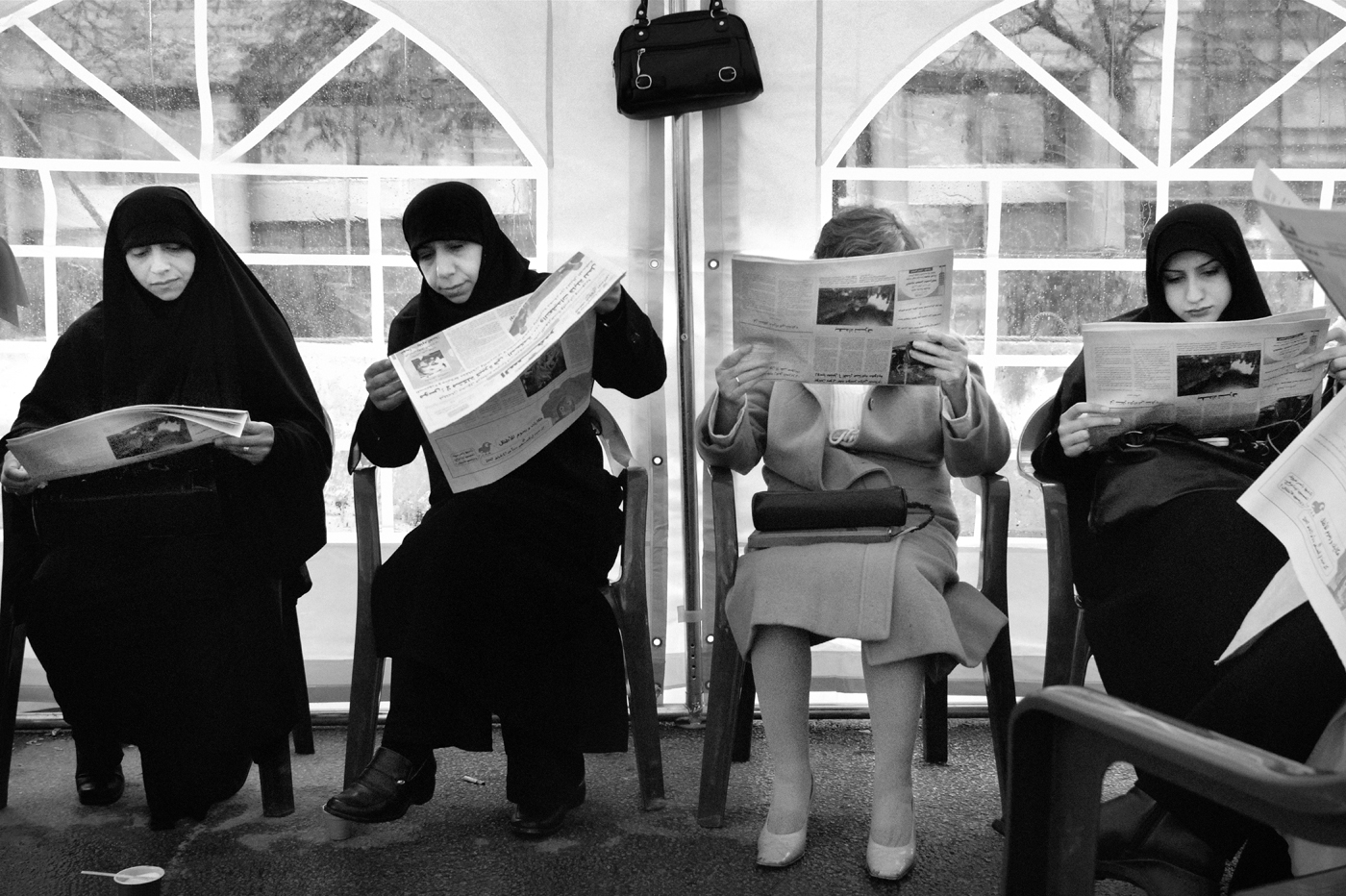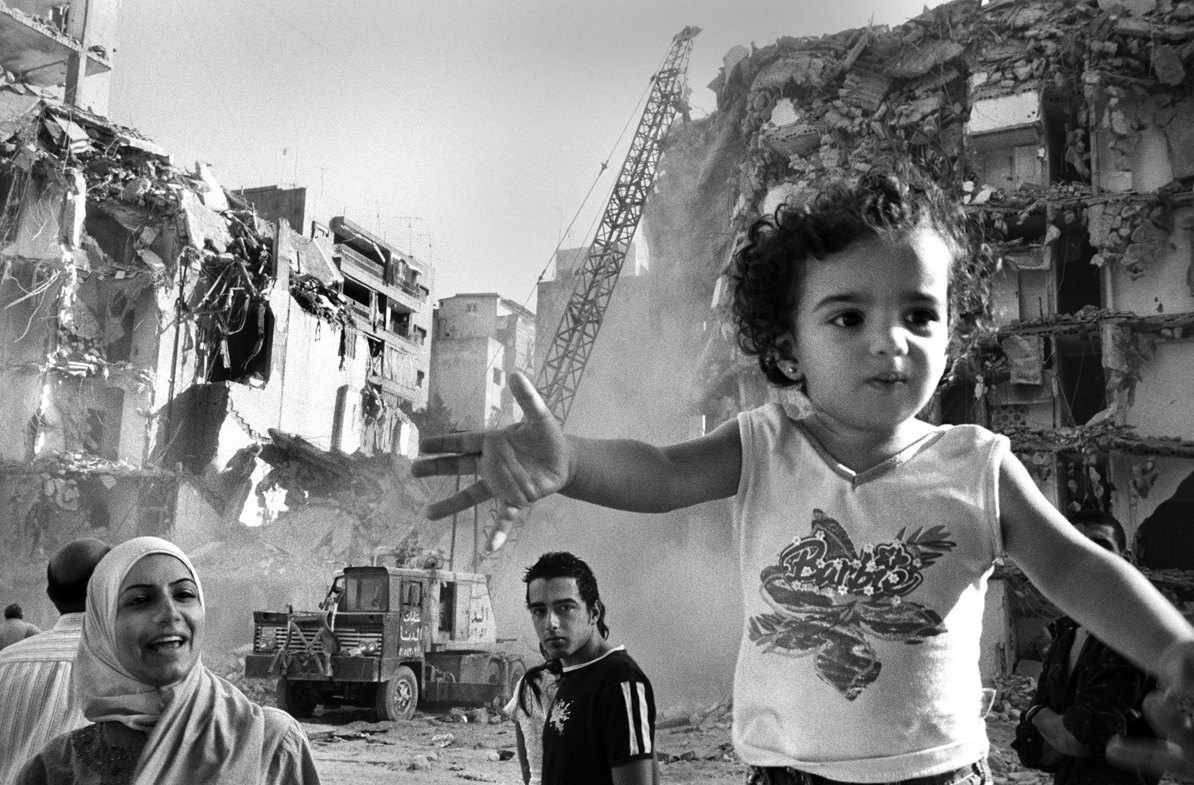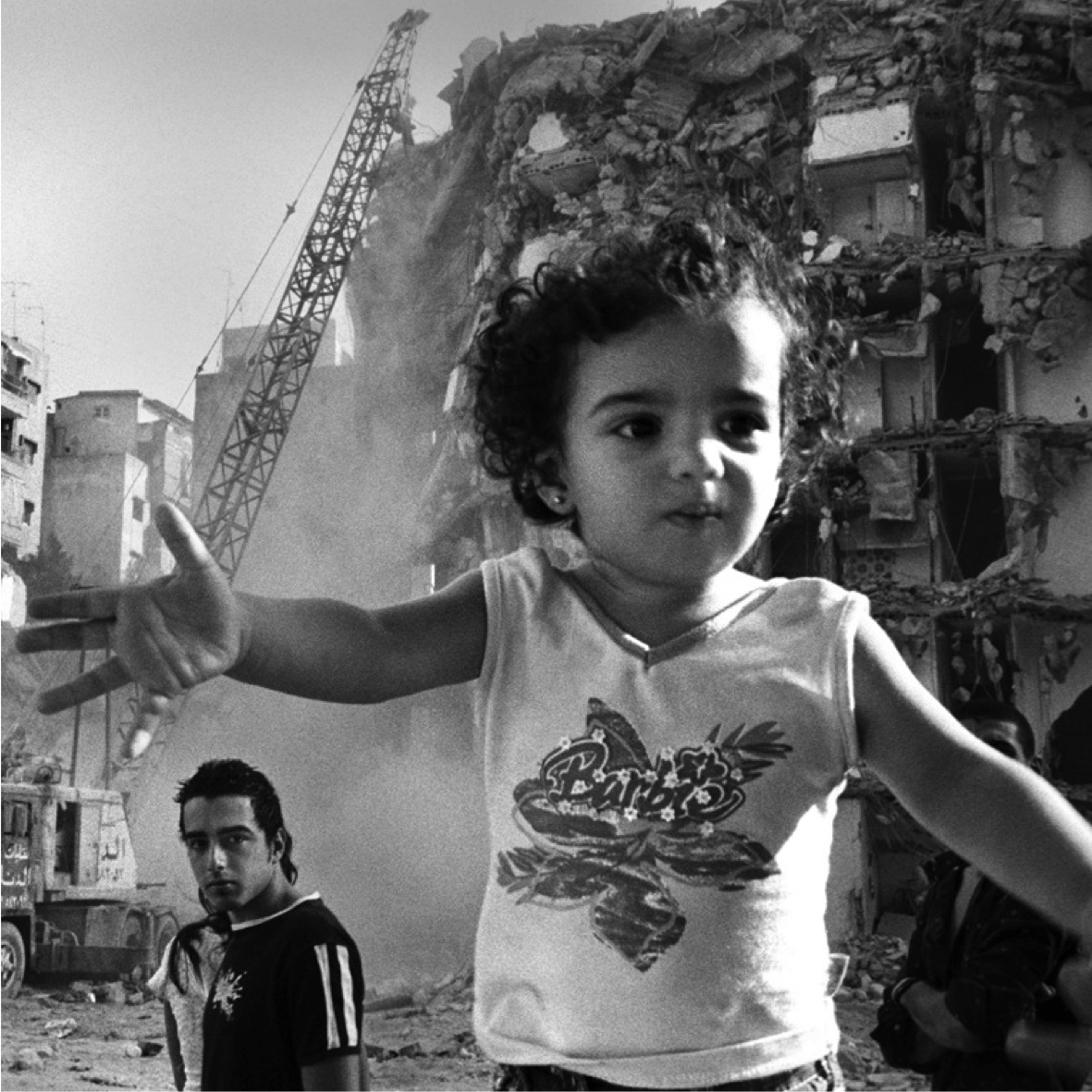In conversation with Lebanese-American photographer Rania Matar
Born and raised in Beirut, Rania Matar is an architect and photographer whose work revolves around the lives of women in her native Lebanon, as well as in the United States, where she is now based. At present, works from three of her recent series are on display at Singapore’s Sana Gallery, the country’s first art gallery dedicated to contemporary Middle Eastern art. I recently spoke with Rania about her work, her life in the States, and her experiences in Lebanon with her subjects.
How did the concept for these series come about?
The exhibition at Sana Gallery consists of three series: Ordinary Lives, A Girl and Her Room, and L’Enfant-Femme. The common thread is the focus on women, and in some instances, Middle Eastern women, so we decided to combine all three projects into one large exhibition. It was my first time seeing my photographs presented this way, and it tied all my work into a larger whole.
As such, each series began from somewhere different, but all are very personal to me and have been inspired by my own life, my background, and my daughters. Ordinary Lives came from the need to tell a different story about the Middle East than the one often portrayed in the Western media - especially after September 11, 2001. A Girl and Her Room was inspired by my eldest teenage daughter – 15 at the time – and how she was transforming before my eyes. L’Enfant Femme was inspired by my youngest daughter, and how her attitude towards herself and her body was transforming, and how her sense of womanhood was developing. While the first project focused only on the Middle East, the last two featured women and girls both in the Middle East and in the US.
In the case of Ordinary Lives, what similarities and differences did you witness with respect to the attitudes of women from different backgrounds (e.g. traditional and modern, Muslim and Christian, etc.) towards the realities of living in a war-torn society?
I grew up in Lebanon, and have been living in the US since 1984. As such, I am a Lebanese ‘insider’ who understands the people, society, and culture of Lebanon; however, I am also an ‘outsider’ who can see everything from a fresh perspective, and still be shocked by some of the contradictions between the countries.
Religion is of course, very present in Lebanon, but when I was photographing the women, religion was not in any way part of the relationships we developed. We were relating to each other as people, as women, and as mothers, and religion did not matter. As for their attitude towards the war, I was humbled by the strength and resilience of literally all the women I was honoured to meet and photograph – women who kept going to keep their homes and children safe. Those women did not start the wars and conflicts, but rather dealt with everything around them with a humbling and admirable grace.
For my later work with the teenage girls and the young women, I worked with individuals both in the Middle East and in the US from different classes and religions. Once again, I was relating to the young women as teenagers going through a complicated time in their lives. It didn’t matter if a girl was Christian or Muslim, or from the US, Lebanon, the Palestinian refugee camps, or the West Bank; my focus was on the similarities of what it is like to be a young woman navigating those complicated years between childhood and adulthood. I saw more similarities than differences.

Dania, 9, Bourj El Barajneh Refugee Camp, Beirut, 2011 (from the L’Enfant Femme series)
On what basis were the subjects chosen?
I worked with the people I was lucky to cross paths with, build relationships with, and who were willing to be a part of my work. I eventually found myself working with women and focusing on women, so I guess being a woman became one criterion along the way. I don’t like to set too many rules and conditions for myself, or strict expectations for a project. I tend to work with what I have and relate to, and let the work ‘take over’ and develop. You never know where and when something beautiful will happen. If one imposes too many restrictions, one might miss out on many beautiful people or moments. That being said, I do quite a bit of work in the editing phase, and this is where one image might get picked over another.
I was humbled by the strength and resilience of literally all the women I was honoured to meet and photograph
Some of the photographs are very structured and thought-out, while others are more spontaneous. In the case of the latter, how did the subjects view your projects, and how did they feel about being photographed?
In all my work, be it more structured or more spontaneous, I work with very little equipment, and tend to make myself transparent. I try not to take too much space. I don’t bring lighting equipment. I am usually accepted when I am photographing the people I am photographing. In most of my work, I am in pretty intimate settings. The hard work of obtaining access is done upfront, in that sense. Once I am there, it means people are typically willing to have me there, and I stay a long time to get a sense of these people and the space I’m in. I interact with people and make sure I treat them with respect, and build a relationship of trust. In most cases, I stay in touch with the people I’m lucky enough to work with, and do my best to share images and keep them posted about any possible exhibitions or publications.
You moved to the US in 1984, almost 10 years after the Civil War began – how did you cope with the consequences of war in Lebanon? Did life go on as ‘usual’ for you and your family as well?
I was a kid during the war in Lebanon. I don’t think I grasped the magnitude of what it was like until much later. I moved out of Lebanon to go to college in the US in 1984. At that point, I was so tired of the war, and just wanted to be like everyone else. I studied architecture and worked as an architect for many years. It wasn’t until 2002 that I became interested in returning to my roots and trying to get a grasp of the Middle East, what I had lived through, and my past experiences. That was probably when I ‘officially’ became a photographer. The Western media was portraying the Middle East in such a negative way after September 11, although I knew the people of the region were kind and hospitable. This, along with the start of the war in Iraq in 2003, propelled me into wanting to tell a different story. People were watching the war from the comfort of their living rooms, almost as if it were a video game or a Hollywood film.
At that time, memories of the war I had experienced as a child came back to me. Being stuck in the 2006 war between Hezbollah and Israel – when I was a mother – also brought back many memories, and my work kept evolving due to all of those unfortunate events. So yes, eventually the war I had experienced as a kid came back to define my work, but it took 18 years.

Newspapers, Beirut, 2007 (from the Ordinary Lives series)
When it comes to Beirut, one often hears so many different narratives about the city. It’s at once described as the ‘Paris of the Middle East’, hedonistic, a war zone, and one of the most dangerous places to live. How do you view Beirut?
I view Beirut as home. It is a schizophrenic place, a complicated place, a place of contradictions, a crazy place … but it is also a wonderful place, and it is home.
Having lived in the US for so many years now, how would you compare American and Lebanese reactions to violence and strife?
I am not qualified to make a comparison between American and Lebanese people as a whole. People are people, and on an individual level, everyone is different and forms his or her own opinions. People come with their own baggage, bias, etc. Sadly, perhaps the Lebanese and Middle Easterners in general have been involuntarily exposed to more war and violence close to home, and as such are more used to the daily reality of it.
This is what the people of Lebanon do. They keep going, rebuilding and restarting, no matter what keeps coming
That being said, I can say that is the American in me that made me interested in human rights issues, and going to take photographs in the Palestinian refugee camps. Maybe by stepping away from the closeness to the conflict and the war, one can have the luxury of refocusing his or her vision, and view the whole thing through different glasses.
Which photograph(s) stand out in your mind the most, and why?
From Ordinary Lives, the photograph that for me says the most about Lebanon and its people is ‘Barbie Girl’. It became the cover of my first book. For me, even though one can see the destruction in the background, the focus is on rebirth and resilience. The toddler wearing the Barbie t-shirt seems like a phoenix rising out of the rubble in front of her mother’s smiling face.

Barbie Girl, Beirut, 2006 (from the Ordinary Lives series)
This is what the people of Lebanon do. They keep going, rebuilding and restarting, no matter what keeps coming.
From my other projects, I have a few photos that speak to me personally, but for reasons I cannot always explain. Barbie Girl is a clear one for me.
How would you say the experience of shooting these series has impacted you on a personal level?
The three different series impacted me in various ways. The first enabled me to visit areas in Lebanon I had never been to, and meet wonderful people I probably would have never gotten the opportunity to meet. It made me appreciate the sameness of us all as people, independent of religion, background, and politics. I was also humbled by people’s trust, hospitality, and kindness towards me, often a total stranger.
My work with the teenage girls made me understand and be more tolerant of my own children. It made me appreciate the vulnerability of teenagers – almost all of them – even when they pretend it isn’t there.
I am thankful for everyone who trusted me and was part of my projects and my work for making me grow as a person, a woman, and a mother.
‘Ordinary Lives’ runs through January 27, 2013.

